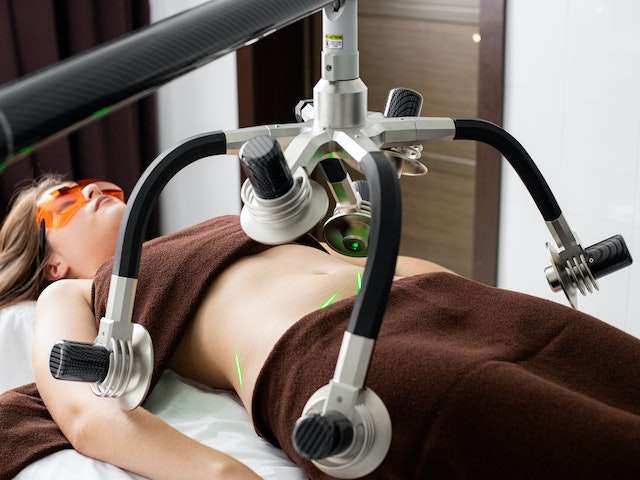Liposuction is a general cosmetic surgery that removes fat cells from specific body parts, including the stomach, hips, thighs, buttocks, and arms. Liposuction may be a reasonable next step if you have been eating well and exercising consistently but still have stubborn fat in your body. However, it will help if you have a firm plan for your liposuction recovery before undergoing treatment.
Look for the best liposuction surgery in Hyderabad, and then Keep in touch with your to address any concerns and avoid consequences. They can assist you in managing your individual needs both before and after theory.
Liposuction Procedure:
What occurs during liposuction is determined by the technique. In most cases, you will be treated with general anesthesia. Then, the surgeon will begin sucking out fat cells in the regions marked before the treatment.
Types of Liposuction:
As previously stated, the type of liposuction you choose will affect your treatment and are procedures that can help you lose weight.
- Tumescent Liposuction is the most commonly used type of liposuction. If you choose this option, a plastic surgeon will inject a saline solution (to aid in fat removal), lidocaine (to decrease discomfort), and epinephrine (to constrict blood vessels) into the treated area. The region will grow and tighten as a result of these injections. Finally, your surgeon will create small incisions in the skin to suction out fat cells using a little tube attached to a vacuum.
- Ultrasound-Assisted Liposuction (UAL): Your surgeon will place a metal rod under your skin that generates ultrasonic energy during this form of liposuction. The ultrasonic radiation effectively breaks down fat cells, making them easier to remove. Because it is so effective at breaking down fat cells, UAL is frequently used in conjunction with tumescent liposuction.
- Laser-Assisted Liposuction (LAL): This method of liposuction breaks down fat cells by using powerful laser light. LAL can be combined with tumescent liposuction.
- Power-Assisted Liposuction (PAL): This method of liposuction employs a tube that swings rapidly back and forth. Your surgeon may recommend PAL for significant volumes of fat removal since it sucks out fat more easily, quickly, and precisely.
Stages of Surgical Recovery:
- Immediately after surgery- Your doctor will apply pressure to the liposuction sites using a compression garment. An anesthetic solution is utilized during the procedure, so it isn’t as painful at first.
- A few hours after surgery- Significant discomfort usually occurs when the anesthesia wears off after a few hours. The location of your liposuction determines the extent of your pain. You should spend the night in the hospital so your doctor can monitor fluid changes and dehydration.
- 3 to 5 days after surgery –You’ll return to your doctor to have the clothes removed, and they’ll examine the cannula incisions.
- The initial week and after that- After the first week, patients are encouraged to give a light massage to move around the stored fluid and smooth over the area. After that, one can gradually expect edema to reduce over the next few weeks gradually.
Remember that the recovery process differs depending on the type of liposuction performed.
What is the Liposuction recovery time?
Immediate recovery time depends on the liposuction areas and the technique used. This can take 5 to 7 days to return to work and 4 to 6 weeks before you can resume strenuous activities like exercise. A long-term recovery usually lasts three months. This permits edema to subside.
Liposuction Treatment:
It’s critical to keep your liposuction recovery as healthy and comfortable as possible.
1. Eat Healthily and Stay Hydrated:
Prioritizing nutrient-dense foods and anti-inflammatory foods will aid recovery and may alleviate swelling discomfort. After your procedure, make sure to include the following foods in your diet:
- Salmon, anchovies, and other fatty fish
- Cruciferous vegetables such as broccoli and greens
- Berries of all types
- Tomatoes
- Celery
- Zucchini
- Grapefruit
- Watermelon
- Turmeric
- Walnuts
- Almonds
- Grass tea
2. Continue to move, but not too much.
3. Follow all post-op instructions.
4. Wear the Proper Clothes
5. Consider getting a Lymphatic Massage.
What Shouldn’t You Do After Liposuction Recovery?
Remember that liposuction aftercare is just as crucial as the treatment itself. Here are some things to avoid while recovering from liposuction.
- Avoid Fast Food
- Refined carbs such as pastries and white bread
- Any foods or beverages high in sodium
- Fried dishes
- Sugary liquids
- Red meat
- Processed meat
- Avoid Exhausting Exercise
- Avoid showers
- Avoid smoking and alcohol consumption.
Complications of Liposuction Recovery:
Even though liposuction is frequently regarded as a quick and minimally invasive surgery, it does carry its own set of hazards. During your rehabilitation, keep an eye out for the following issues:
- Excessive bruising
- Complications of anesthesia
- Shock, most usually caused by a lack of fluids after surgery
- Fluid pockets accumulating beneath the skin
- Infections like strep or staph
- A fat embolism occurs when little bits of fat break off and restrict blood flow.
- Clots in the blood
- Skin burns caused by surgical tools
- A fat reduction that is uneven
- Reactions to Lidocaine
- Skin sensory changes, such as numbness
- Nerve, blood vascular, muscle, lungs, and abdominal organ damage
Final words:
Liposuction is a cosmetic surgical technique that removes excess fat from the body. However, as with any major operation, procedures and safeguards must be followed to guarantee a smooth recovery. This includes the following:
Avoiding excessive activities for the first few weeks while wearing a compression bandage and performing mild exercises such as walking.

